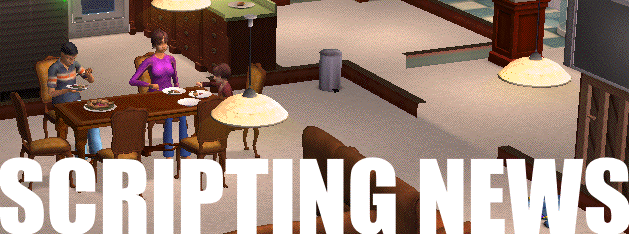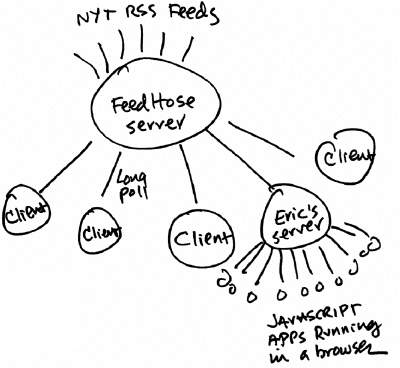
 Perfect 10 for Microsoft ad
Perfect 10 for Microsoft ad 
Really.
A few observations.
They should have started running these ads before their rollout. Would have made the Ballmer interviews go better.
The ad works because it says something we all feel about phones, even if sometimes we're the ones bumping into people. It's annoying when people walk around with their mind and eyes elsewhere.
You even see assholes riding their bikes at full speed reading their phone, hands totally off the handlebars. They aren't bike riders, they're missiles.
It also works because it doesn't mention the competition. It isn't about the competition. It's saying -- hey -- we've been paying attention, even though we haven't had a product you lust for, we know what's going on.
It answers the "Microsoft is clueless" challenge.
Of course it says nothing about the phone.
If the product sucks the ad is for naught. But you sort of suspect they wouldn't have gone to the trouble to create such an excellent ad for a shit product.
But that's not the first thing we need to know. We don't want to buy a phone from someone we don't admire. Apple made it about that. I bought a Droid because they had something Apple didn't -- macho and guts and freedom (or at least the promise of freedom) at a time when iPhones seemed wimpy and locked-up and unreliable. Now with the iPhone 4, Apple is selling luxury. And as always selling Apple.
Microsoft needs to tell us what we're buying when we buy Microsoft. They're beginning to say something here. We're buying someone who is like us. Patient but getting kind of fed up. Really.
Maybe their phone reflects reality. Or maybe that's really-ity. ![]()
Good work!
 Beautiful weekday bike ride
Beautiful weekday bike ride 
 The rain they were forecasting went away and today was a gloriously beautiful autumn day in NYC. Temp in the high 60s, light breeze, very light traffic on the trail. Virtually ideal biking conditions.
The rain they were forecasting went away and today was a gloriously beautiful autumn day in NYC. Temp in the high 60s, light breeze, very light traffic on the trail. Virtually ideal biking conditions.
I have a new bike meditation. I am not the fastest biker on the trail, I am the safest. I go through the dangerous intersections slowly and carefully. If, as I'm entering a major danger spot, I find myself behind a slow cyclist or two, I patiently fall in behind them. Sorry folks, but if someone is going down I'd rather it not be me. ![]()
The bike is holding up well.
The river looks glassy and sunny today.
A group of walkers comes by when I'm stopped at the turnaround point. One of them says, if you're walking next to the river, it's a river walk. Case closed! Said like a true New Yorker. I took a picture as they went by, along with a biker who was cursing them for taking up the whole path with their philosophizing.
The map shows that the ride was 52 minutes, 8.94 miles.
 Eric Kidd's feedhose client in Javascript
Eric Kidd's feedhose client in Javascript 
I love doing projects with Eric Kidd. We've never actually met face to face, but he helped enormously with XML-RPC and RSS when they were in their formative stages. Eric did the C implementation of XML-RPC. Really did it right and it stood the test of time.
 Well, we're playing tennis again. I hit the ball over the net, he hits it back, etc etc. In this game you try to give the other guy a clear shot, and he hits a line drive back to you. Nice hard hit, no spin, nothing up the sleeve.
Well, we're playing tennis again. I hit the ball over the net, he hits it back, etc etc. In this game you try to give the other guy a clear shot, and he hits a line drive back to you. Nice hard hit, no spin, nothing up the sleeve.
I've been working on a protocol called FeedHose. As input it takes RSS and Atom feeds, and on the other end, it produces a stream of items. The key new thing here is that you connect to it via a long-poll request. The server returns as soon as a new item is available. None of the usual polling, and none of the latency that comes with it. Truly realtime! And it freaking works. (Many thanks to all the people who pioneered long-polling before I started doing it. I'm standing on the shoulders of giants.)
It caught Eric's eye, and imagination, when JSON support went in.
So along comes Eric and he says: "I can make that scale."
He builds a node.js app, works at making it scale.
He thinks his app, which fits on as a sort of "nozzle" to my hose, can spray items at tens if not hundreds of thousands of clients. That's really fcuking cool. ![]()
The picture above illustrates the architecture. But the proof is in the use:
http://feedhose.randomhacks.net/
This is a demo system, but it's useful because it gives you the news from the NY Times, as it becomes available.
The goal is to get many of these hoses running, for all kinds of publications, and for new kinds (microblogs). The key point is that the updates flow in real time, yet there is no single central server. Want to build a decentralized network that works like Twitter? You this to make it work.
This is on the road to the decentralized news system of the future.
If you run a realtime news organization, let's look at making your feed technology reflect that timeliness. ![]()




